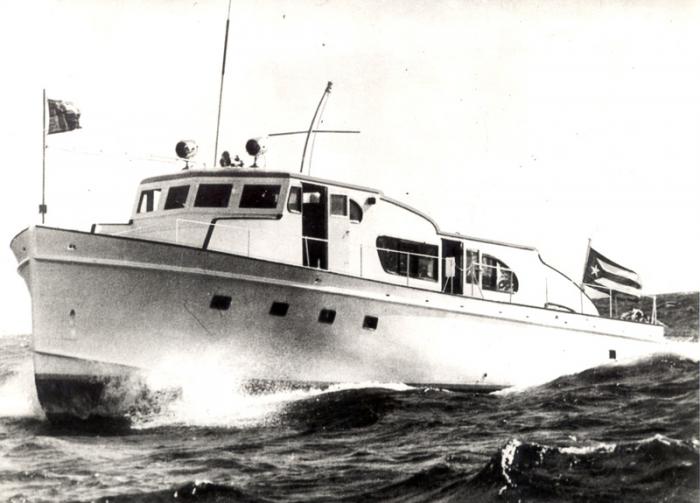At dawn on November 25, 1956, the Granma Yacht, a wood boat for recreational activities designed for no more than 6 0 7 people, began its journey from port of Tuxpan in Mexico to Cuba. It was sunken above its flotation line due to the load of 82 men, weapons, supplies, food and filled fuel tanks, which could cause a sinking before the unpredictable swells of the Caribbean Sea.
But some of those young expeditionaries, led by Fidel Castro, had been faced challenges and missions that seemed impossible to overpass.
Just three years before, on July 26, 1953, a group of revolutionaries also led by Fidel and with guns and shotguns attacked the Moncada Garrison, the second military fortress of the country, in Santiago de Cuba, and Carlos Manuel de Céspedes, of Bayamo, guarded by more than a thousand well armed soldiers.
Although the action was a defeat and many revolutionaries were massacred, the survivors leaded by Fidel faced the prison with dignity and when by the people pressure they were amnestied in 1955, they formed the squad who followed the historical leader into exile in Mexico and many of them undertook the Granma´s odyssey.
When Fidel leaving the country in July 1955 declared: “All the adequate ways to the civil struggle have been closed for us. As a Martiano, I think the time has come to take the rights and not ask for them, to tear them away instead of begging them. The patience of Cubans has limits (…) From trips like this one does not come back, or it returns with the tyranny headless.
On December 2, the Granma yacht arrived at its destination in a landing or shipwreck as Ernesto Che Guevara described it, the then doctor of the combatants, because of the difficulties of the inhospitable place where they arrived in a mangroves and the swamps of Las Coloradas Beach.
The troops of the dictatorship were in operations alerted by the intelligence service that worked in Mexico and which nevertheless failed in their attempt to kill the leader of the Revolution, warned of the yacht departure.
The delay of the journey due to the sea conditions itself and the overloaded of the yacht that led to the fact that it had to reduce its speed, prevented to match the landing with the coordinated uprising of November 30th, in Santiago, led by Frank País and which had as objective, beside to supporting the landing, from the beginning undertake the revolutionary fight in the region.
On December 5th, in Alegría de Pio, a thin mountain among the reeds, the expeditionaries fell into an army ambush and divided into several groups. In the next days many expeditionaries were killed in cold blood by the henchmen who in their military reports considered Fidel and his companions eliminated.
Some of the survivors, among which were the groups of Fidel and his brother Raul and others, with the support of the peasants organized by Celia Sánchez Manduley, could reach safe sites of the Sierra Maestra and meet to form the the Rebel Army, which in early 1957 waged its first victorious fighting.
It was by historical coincidence that exactly 60 years after the start of the Granma journey, another November 25th, but in 2016 the undefeated Commander in Chief, Fidel Castro, who had achieved the triumph of the Revolution despite extraordinary difficulties and facing the most powerful empire ever in the history, passed away with the same struggle and decision spirit of the 82 expeditionaries who followed him on that journey, but now made millions in the worthy son of the Homeland. (By Jorge Wejebe Cobo, ACN)

